Dixie:
Militarization and Modernization in the American South (Politics and Culture in the Twentieth-Century South Ser., 18)
Frederickson
Visit to download the full and correct content document: https://ebookmass.com/product/cold-war-dixie-militarization-and-modernization-in-the -american-south-politics-and-culture-in-the-twentieth-century-south-ser-18-frederickso n/
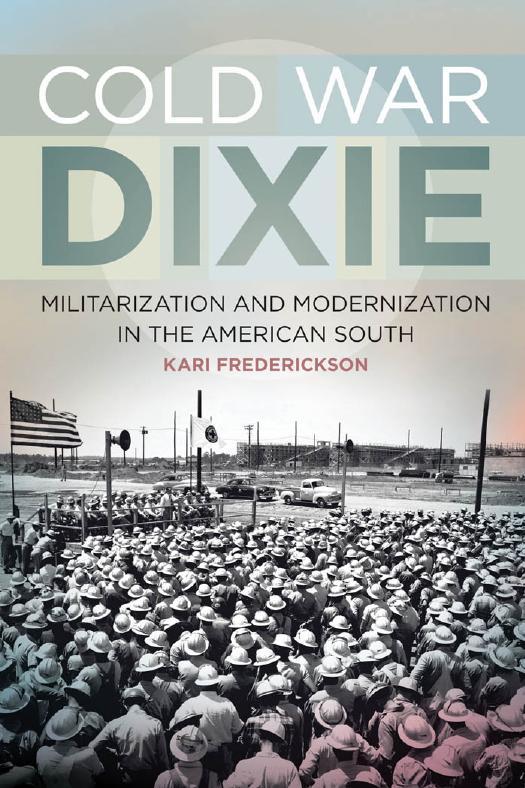
More products digital (pdf, epub, mobi) instant download maybe you interests ...
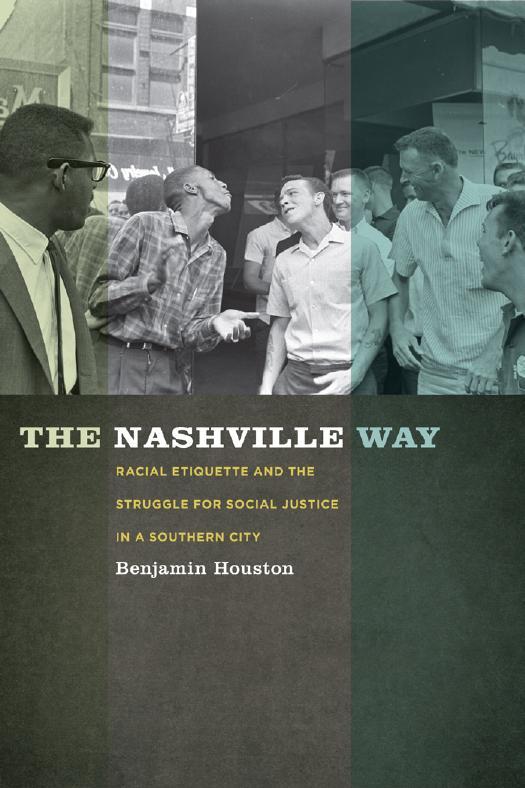

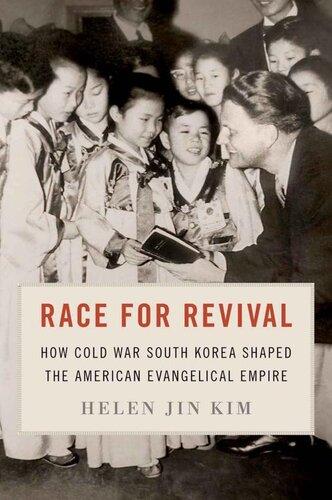
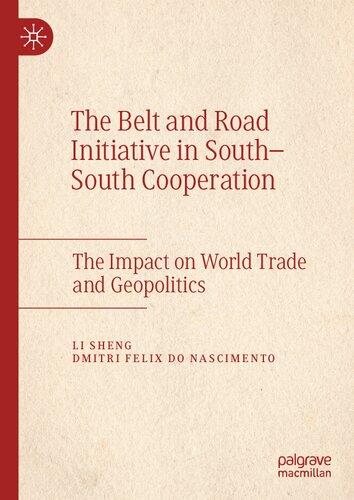
The Nashville Way: Racial Etiquette and the Struggle for Social Justice in a Southern City (Politics and Culture in the Twentieth-Century South Ser., 17) 3rd Edition Houston
https://ebookmass.com/product/the-nashville-way-racial-etiquetteand-the-struggle-for-social-justice-in-a-southern-city-politicsand-culture-in-the-twentieth-century-south-ser-17-3rd-editionhouston/
Finding Purple America: The South and the Future of American Cultural Studies (The New Southern Studies Ser.) 2nd Edition Smith
https://ebookmass.com/product/finding-purple-america-the-southand-the-future-of-american-cultural-studies-the-new-southernstudies-ser-2nd-edition-smith/
Race for Revival : How Cold War South Korea Shaped the American Evangelical Empire Assistant Professor Of American Religious History Helen Jin Kim
https://ebookmass.com/product/race-for-revival-how-cold-warsouth-korea-shaped-the-american-evangelical-empire-assistantprofessor-of-american-religious-history-helen-jin-kim/
The Belt and Road Initiative in South–South Cooperation: The Impact on World Trade and Geopolitics Li Sheng
https://ebookmass.com/product/the-belt-and-road-initiative-insouth-south-cooperation-the-impact-on-world-trade-andgeopolitics-li-sheng/

Visual Politics in the Global South Anastasia Veneti
https://ebookmass.com/product/visual-politics-in-the-globalsouth-anastasia-veneti/
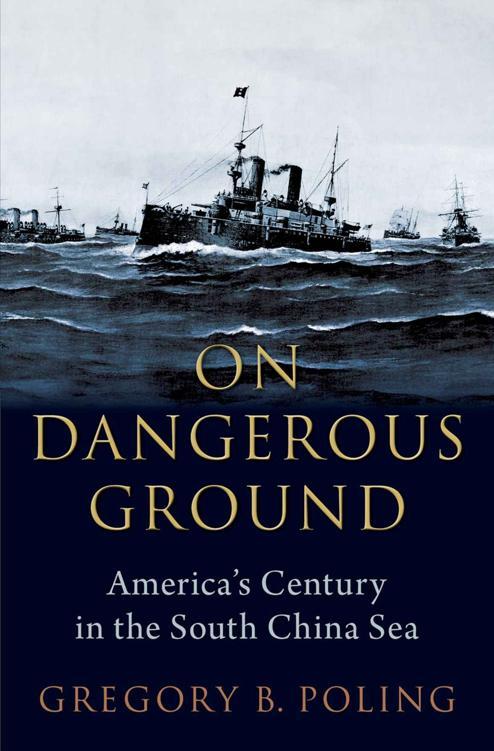
On Dangerous Ground: America's Century in the South China Sea Gregory B. Poling
https://ebookmass.com/product/on-dangerous-ground-americascentury-in-the-south-china-sea-gregory-b-poling/
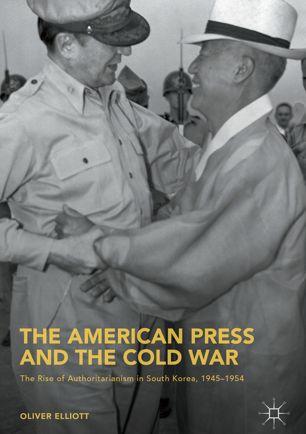
The American Press and the Cold War 1st ed. Edition Oliver Elliott
https://ebookmass.com/product/the-american-press-and-the-coldwar-1st-ed-edition-oliver-elliott/
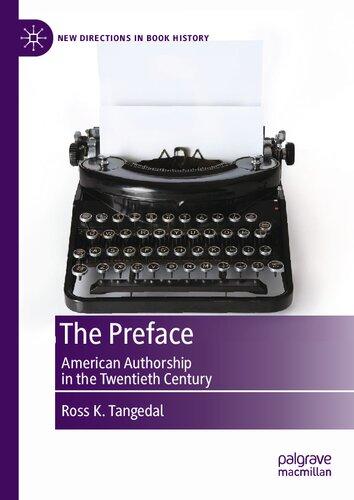
The Preface: American Authorship in the Twentieth Century Ross K. Tangedal
https://ebookmass.com/product/the-preface-american-authorship-inthe-twentieth-century-ross-k-tangedal/
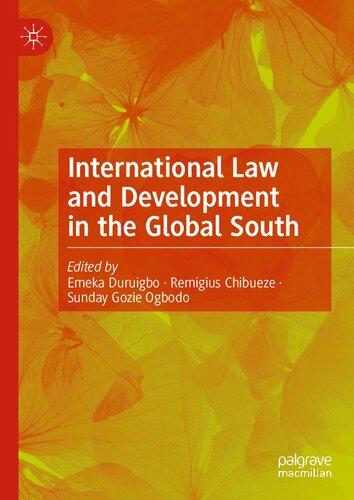
International Law and Development in the Global South Emeka Duruigbo
https://ebookmass.com/product/international-law-and-developmentin-the-global-south-emeka-duruigbo/
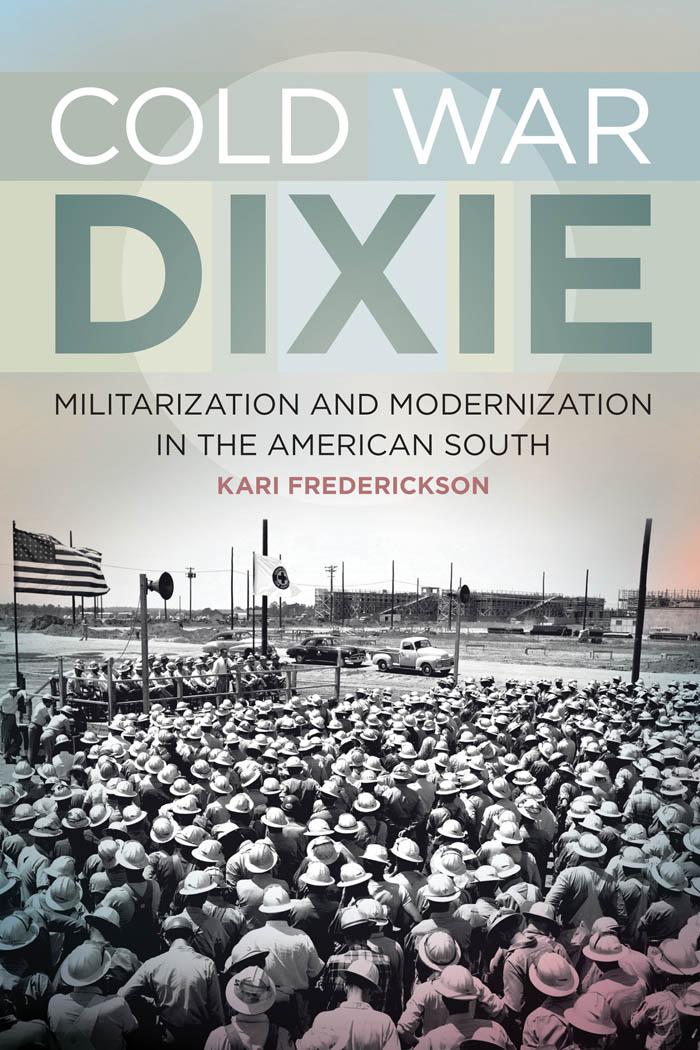


SERIES EDITORS
Bryant Simon, Temple University
Jane Dailey, University of Chicago
ADVISORY BOARD
Lisa Dorr, University of Alabama
Grace Elizabeth Hale, University of Virginia
Randal Jelks, University of Kansas
Kevin Kruse, Princeton University
Robert Norrell, University of Tennessee
Bruce Schulman, Boston University
Marjorie Spruill, University of South Carolina
J. Mills Thornton, University of Michigan
Allen Tullos, Emory University
Brian Ward, University of Manchester
COLD WAR DIXIE
Militarization and Modernization in the American South
KARI FREDERICKSON
The University of Georgia Press Athens and London
© 2013 by the University of Georgia Press
Athens, Georgia 30602
www.ugapress.org
All rights reserved
Set in Minion Pro by Graphic Composition, Inc., Bogart, Georgia Manufactured by Thomson-Shore
The paper in this book meets the guidelines for permanence and durability of the Committee on Production Guidelines for Book Longevity of the Council on Library Resources.
Printed in the United States of America
17 16 15 14 13 p 5 4 3 2 1
Library of Congress Cataloging-in-Publication Data
Frederickson, Kari A.
Cold War Dixie : militarization and modernization in the American South / Kari Frederickson.
pages cm. — (Politics and culture in the twentieth-century South) Includes bibliographical references and index.
isbn-13: 978-0-8203-4519-2 (hardcover : alkaline paper)
isbn-10: 0-8203-4519-9 (hardcover : alkaline paper)
isbn-13: 978-0-8203-4520-8 (paperback : alkaline paper)
isbn-10: 0-8203-4520-2 (paperback : alkaline paper)
1. Savannah River Valley (Ga. and S.C.)—History—20th century. 2. Savannah River Valley (Ga. and S.C.)—Social conditions—20th century. 3. Savannah River Valley (Ga. and S.C.)—Economic conditions—20th century. 4. Cold War—Social aspects—Savannah River Valley (Ga. and S.C.) 5. Nuclear weapons industry—Social aspects—Savannah River Valley (Ga. and S.C.)—History—20th century. 6. Savannah River Plant (E.I. du Pont de Nemours & Company)—History. 7. Militarism—Savannah River Valley (Ga. and S.C.)—History—20th century. 8. Social change—Savannah River Valley (Ga. and S.C.)—History—20th century. 9. Aiken (S.C.)— Social conditions—20th century. 10. Aiken (S.C.)—Economic conditions—20th century. I. Title. f277.s3f74 2013 975'.043—dc23 2012048326
British Library Cataloging-in-Publication Data available ISBNfordigitaledition:978-0-8203-4566-6
FOR OLIVIA AND REBECCA
This page intentionally left blank
CONTENTS
List of Illustrations ix
Acknowledgments xi
Introduction 1
One. “This Most Essential Task”: The Decision to Build the Super 10
Two. A Varied Landscape: Geography and Culture in the Savannah River Valley 30
Three. “A Land Doomed and Damned”: The Costs of Militarization 48
Four. “Bigger’n Any Lie”: Building the Bomb Plant 75
Five. Rejecting the Garrison State: National Priorities and Local Limitations 107
Six. “Better Living”: Life in a Cold War Company Town 123
Seven. Shifting Landscapes: Politics and Race in a Cold War Community 147
Epilogue 170
Notes 177
Bibliography 205
Index 221
This page intentionally left blank
ILLUSTRATIONS
Map 1. The Savannah River Plant, South Carolina 2
Map 2. The Savannah River Plant and surrounding area 3
Figure 1. Redcliffe 26
Figure 2. John Shaw Billings on the balcony of Redcliffe 27
Figure 3. Graniteville Mill 38
Figure 4. Louise Hitchcock 42
Figure 5. Banksia 43
Figure 6. Ellenton depot 54
Figure 7. Ellenton businesses 54
Figure 8. Cassels’s Long Store, Ellenton 55
Figure 9. Strom Thurmond 62
Figure 10. Construction administration area 76
Figure 11. Construction workers attending a mandatory safety meeting 82
Figure 12. Shift change during the construction phase 83
Figure 13. Savannah River Plant under construction 86
Figure 14. “Why We Eat Better” 129
Figure 15. Crawford H. Greenewalt 133
Figure 16. Aiken City Seal 145
This page intentionally left blank
ACKNOWLEDGMENTS
One does not successfully conclude a twelve-year scholarly journey without racking up a lot of debts. So it is with this project. First and foremost, this book would not have been possible without the generosity of the former employees of the Savannah River Plant / Site and of the residents of Aiken and Graniteville who shared their insights with me about the impact of the Cold War on their communities. I am especially grateful to Dr. Walter Joseph and Mr. Willar Hightower, who spent many hours talking with me and who served as particularly perceptive guides to the region and its transformation.
I was fortunate to have had the expert assistance of many archivists, fellow historians, and other history professionals along the way, including Stan Price at the Gregg-Graniteville Library; James Farmer Jr., who pointed me in the direction of the John Shaw Billings Collection; Elliot Levy, Brenda Baratto, and Mary White of the Aiken County Historical Society; Allan Riddick; Henry Fulmer, Beth Bilderbeck, and Herb Hartsook at the South Caroliniana Library; Jon M. Williams of the Hagley Museum and Library; George Wingard Jr. of the Savannah River Archaeological Research Project; Mary Beth Reed of New South Associates; Caroline Bradford of the Savannah River Site Cold War Historic Preservation Program; and James E. Cross, archivist of the Strom Thurmond Collection at Clemson University. Grants from the National Endowment for the Humanities and the Institute for Southern Studies at the University of South Carolina helped get this project off the ground.
Colleagues, staff, and students at the University of Alabama, especially Larry Clayton, Lisa Dorr, John Giggie, Andrew Huebner, Howard Jones, Larry Kohl, Michael Mendle, George Rable, and Josh Rothman provided and continue to provide a great support network. Two years ago, I took on the duties of department chair. Our wonderful staff—Kay Branyon, Christina Kircharr, Ellen Pledger, and Fay Wheat—made transitioning to a twelve-month position incredibly easy. I am grateful to Dean Robert Olin and Associate Dean Carmen Burkhalter of the College of Arts and Sciences for granting me a sabbatical to
work on this book but mostly for their patience as I struggled to balance my duties as department chair with the demands of finishing a book. Undergraduate student Nick Theodore contributed careful research from the U.S. Census. Graduate student Joseph Pearson read an entire draft of the manuscript and offered useful suggestions at a critical juncture in the project. Eric Rose, a history graduate student from the University of South Carolina, conducted research for me when I could not get to Columbia.
My greatest debt goes to my family—immediate and extended. My in-laws, Otis and Esther Melton, shared their memories of growing up in Graniteville and provided me a place to stay while I conducted my research. My husband, Jeff, gave me the idea for the book and remained enthusiastic about the project for more than a decade. He read each chapter more than once and often brought his considerable literary skills to bear. I have dedicated this book to my daughters, Olivia and Rebecca. Although their arrivals greatly delayed the completion of this book, I would not have had it any other way.
Open any South Carolina highway map and you will find standard features— blue highways and roads, black railroad lines, dotted lines denoting county boundaries, red flags marking schools and hospitals, green parks and golf courses. Near the state’s western border, though, is a massive blank space labeled “The Savannah River Site—U.S. Department of Energy.” Covering approximately 20 percent of Aiken County, 30 percent of Barnwell County, and 10 percent of Allendale, the Savannah River Site is rendered featureless on most maps, a vast expanse of federal white space that is devoid of traditional cartographic characteristics. Built in the early 1950s amid the escalating tensions and threats of the Cold War, the Savannah River Plant (as it was known until the 1980s) was an Atomic Energy Commission (aec) facility operated by the Du Pont Corporation and dedicated to producing plutonium, tritium, deuterium, and heavy water for the hydrogen bomb. In size and scope, the Savannah River Plant (srp) was a technological and engineering marvel—the most expansive federal project ever undertaken. Its five nuclear reactors and more than two hundred other industrial and administrative buildings were spread across more than three hundred square miles—an area roughly the size of Washington, D.C. Built to meet the needs of a new kind of war—a war with no end in sight—the srp imprinted the modern military state on the southern landscape, transforming not only the space within its boundaries but the surrounding communities.
As the aec’s largest installation, the experiences and problems encountered in the development of the srp provided a blueprint for future Cold War communities across the nation. The changes that unfolded in this mostly rural section of South Carolina reflected the intersection of national policy and priorities with complex local realities. The srp was the first aec installation
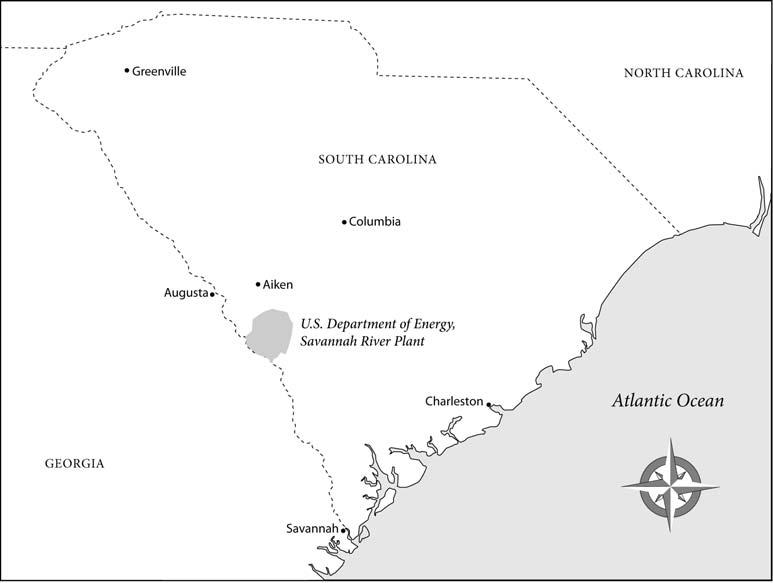
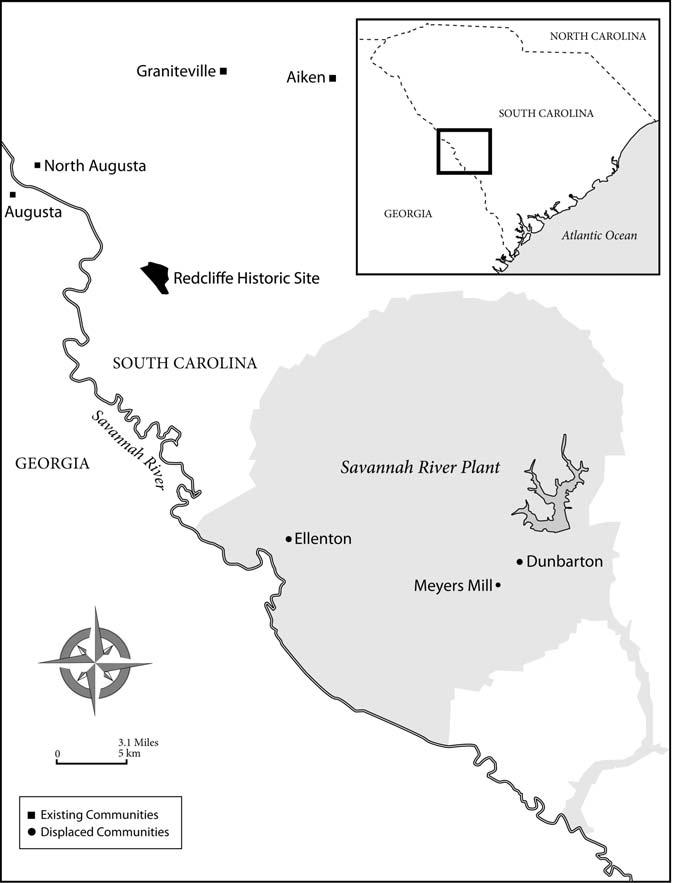
created without an adjoining company town. Seeking to avoid the implementation of excessive governmental controls and planning that are fundamental to a garrison state, the Truman administration chose instead to rely on existing infrastructure and private enterprise to prepare the country for and maintain a permanent state of war readiness. The needs of the expanding national security state, filtered through the specific culture of Du Pont Corporation, transformed the area’s economy, landscape, social relations, and politics, precipitating and shaping the rapid modernization of this largely undeveloped corner of the state. A region that in 1950 had been primarily poor, uneducated, rural, and staunchly Democratic by the mid-1960s boasted the most PhDs per capita of any South Carolina region and had become increasingly middle class, suburban, consumption oriented, and Republican. The story of the impact of the srp and the dawn of the Cold War in the South is ultimately a story of the rapid process of modernization. A deep investigation of a small place, this book places America’s longest war at the center of regional change. With particular emphasis on the critical 1950–70 period, this study captures the dynamic social, political, and cultural transformations that unfolded in this part of the South as the military-industrial complex took hold.
Beginning in the late 1940s and continuing until the end of the 1980s, the American South became an increasingly attractive location for the many and varied institutions—military, aeronautical, industrial, scientific—that rose to meet the nation’s expanding Cold War needs. Although the West (in particular, Southern California) emerged as the largest beneficiary in terms of total defense dollars received, the South surpassed the national average in terms of its dependence on the defense establishment for both employment and income. Historians have only just begun to examine the Cold War’s impact on the region and how specific Cold War facilities shaped individual communities. Published in 1994, Bruce Schulman’s From Cotton Belt to Sunbelt remains the definitive work for those seeking to understand how federal policy— including military spending—shaped the South. “In 1973,” Schulman writes, “more southerners worked in defense-related industries than in textiles, synthetics, and apparel combined. Defense dollars permeated nearly every town in the region.” But subsequent historical inquiry into the complex nature of this dependency and its effects on southern development has lagged behind studies of the Cold War’s impact on the American West. Studies by Roger Lotchin,
Gerald Nash, Kevin Fernlund, Bruce Hevly and John M. Findlay, and Lisa McGirr, among others, explore how defense industries and military bases were integral to that region’s economic, political, and cultural development. Among the Manhattan Project facilities, the Hanford Engineering Works and Los Alamos National Laboratory have been the subjects of numerous historical studies and memoirs, while Oak Ridge National Laboratory and its effect on the surrounding Tennessee communities remains understudied. Among defenserelated installations in the South, military bases have received the greatest attention from historians. This makes perfect sense, for as Schulman notes, “the region remained the nation’s boot camp throughout the postwar era.” But scores of facilities, plants, and research parks dependent on defense spending, each with its own distinct population, mission, and culture, await historians.
To explain postwar change, historians have looked elsewhere, particularly to the civil rights movement. Scholars have begun to move away from straight movement histories to look at other forces, such as suburbanization, to help explain regional change in the 1960s and 1970s. In these works, the Cold War serves mostly as a chronological frame rather than as a national undertaking that set in motion interlocking forces with explanatory powers of their own. Those historians interested in the effect of the Cold War specifically on the South have largely focused on the complex impact of anticommunism on southern politics and the budding civil rights movement. Anticommunism poisoned the liberal political well and fueled the Massive Resistance movement, making even the most tepid statement on racial progress by an elected official a sure road to political oblivion. The nation’s concurrent struggle against communism gave civil rights activists some leverage in pushing political leaders to give substance to America’s democratic principles. This study does not seek so much to supplant this narrative as to broaden the story of postwar change and the consequences of the Cold War beyond the political ramifications of a toxic anticommunism. It does so by highlighting the ways in which Cold War imperatives transformed the economy, social structure, and culture of a particular community, thus ultimately shaping the way in which the civil rights movement unfolded in this corner of the South.
In 1950, the tricounty region out of which the srp was carved was a diverse mixture of charming small towns, textile mill villages, and struggling rural areas. Some of the country’s wealthiest owners of racehorses set up their winter
training quarters in the city of Aiken, in Aiken County, and built magnificent homes they referred to as their winter “cottages.” Over the next ten years, thousands of highly skilled and educated scientists and engineers recruited by the aec and Du Pont from across the nation poured into this region, and the majority of them settled in and around Aiken. At the height of its productivity, the srp and its affiliated industries employed more than twenty-five thousand people in what eventually became known as the Central Savannah River Area. Scores of suburban subdivisions and national retail outlets served the housing and lifestyle needs of these new white-collar residents and offered new opportunities to longtime residents. For residents of the mill villages in nearby Horse Creek Valley and the outlying rural communities, the srp was an economic godsend, enabling many of them to enter the middle class and giving them new opportunities to participate in the region’s expanding mass consumer culture. Most native South Carolinians as well as newcomers proudly embraced their new roles in the nation’s Cold War weapons program.
This burgeoning middle class, the influx of national retail establishments and a flourishing consumer culture, and mass suburbanization introduced a larger culture heralding efficiency, rationality, consumption, technological innovation, and progress—all components of the process of modernization— that threatened to displace the region’s older rural and leisure culture. Much of this impact drew from the influence of the Du Pont Corporation. The changes that befell the communities surrounding the srp reflected the needs of the national security state as they were filtered through and shaped by Du Pont’s specific corporate culture. Du Pont arrived in South Carolina prepared to do battle in the Cold War. Although the company’s origins lay in the production of gunpowder, by the mid-twentieth century, Du Pont boasted a long line of consumer products with nylon—the “miracle fiber”—in the forefront. With its focus on the production of both fissile materials and consumer goods, Du Pont represented the new orientation of postwar America, in which corporations became central to the nation’s security and prosperity. With its thousands of employees in South Carolina, Du Pont fostered a local culture that privileged modernization, innovation, efficiency, consumption, and civic involvement as indispensable components in the Cold War battle with communism. By the 1960s, Du Pont and aec employees constituted roughly one-third of the region’s population. Riding the crest of the “scientists movement”—a broad popular belief that students of science were particularly well positioned to weigh in on a whole host of public policy issues—the srp employees moved confidently
into positions of power and influence in their communities, leaving a lasting imprint on the development of those communities.
The region’s new emphasis on modernization and efficiency had wideranging cultural, social, racial, and political consequences. The creation of the srp profoundly changed the region’s landscape. This study follows closely historian Mart Stewart’s definition of landscape as “land shaped by human hands.” Furthermore, Stewart argues, “humans create landscapes in accordance with both aesthetic and social values or in order to facilitate certain kinds of production.” The confiscation of hundreds of thousands of acres of land for the development of a sprawling Cold War complex decisively reordered the area’s traditional rural landscape, not only within the plant boundaries but also through the institution of newly built structures such as suburban tract housing and the creation of new commercial outlets. An emphasis on efficiency and security likewise blurred traditional geographic boundaries and introduced a new understanding of land and space defined by Cold War needs. In a region where the relationship between town and country had once been relatively fluid, planners of the military-industrial complex introduced modern concepts of boundaries and land use that rendered the environment subordinate to technology and security. The town of Aiken, South Carolina, where most new plant personnel lived, exhibited growth patterns that resulted in part from population expansion but were also shaped by Du Pont’s specific corporate culture and the nature of the work undertaken at the plant.
The Cold War and civil rights movement dawned simultaneously in South Carolina. African Americans saw in the srp an opportunity for advancement and hoped to use the Cold War crisis to their economic advantage—that is, as a means of prying open a calcified labor market that offered few opportunities for advancement and economic security. Led by national civil rights organizations and putting their faith in federal antidiscrimination employment policies, local blacks looked cautiously to the plant for economic salvation. Civil rights leaders couched their demands in the new language of national security, arguing that the failure to use African American workers at a moment of national emergency not only violated federal policy but was dangerous, was irresponsible, and made for poor publicity abroad.
Civil rights advocates’ demands, however, were trumped by the arguments put forth by Du Pont Corporation. A profoundly conservative industrial behemoth that saw its history and that of the nation as forever linked, Du Pont used the project’s urgency as an argument against changing social patterns.
The speed with which the plant had to be built permitted the federal government to give lip service to antidiscrimination provisions and to rely on Du Pont’s tepid assurances of fair hiring practices. Whereas existing and new government statutes might have been enforced, thus opening the door wide for African American advancement, the Cold War emergency allowed Du Pont’s corporate culture to predominate and to blunt most of the plant’s opportunities and potential for promoting rapid and meaningful social change.
The political changes that befell the region in the 1950s and 1960s were shaped first by the Cold War and Du Pont’s specific corporate culture. The region surrounding the srp, especially Aiken County, was among the first in the state to support Republican candidates at the presidential level. More significant, though, Aiken Republicans were the first to organize at the local level. By the late 1950s, Republican candidates, many of them plant employees, were vying for municipal and county offices. Growing out of local civic associations, the local Republican Party recruited support in part by appealing to issues that resonated with conservatives across the nation but, more important, by arguing that a two-party system promoted transparency and efficiency—in effect, a modern political system. This study does not dispute the importance of the civil rights movement in generating a conservative backlash that ultimately led many white southerners to vote Republican in national elections but does contend that the roots of this Republican resurgence lay in the 1950s and were directly tied to changes wrought by the Cold War.
The region that would play host to the srp boasted some of the worst racial violence of the Reconstruction and New South eras and spawned politicians— among them Benjamin Tillman, Cole Blease, and Strom Thurmond—who dedicated much of their public lives to the preservation of the color line. It is perhaps surprising, then, that the civil rights revolution unfolded relatively quietly in the communities surrounding the plant. Those readers looking for a traditional civil rights narrative will find a different story in these pages. Race was and remains today an important factor in the region’s development; nevertheless, a comprehensive and nuanced rendering of the history of this region in the 1950s and 1960s requires placing the Cold War at the center. The area’s profound demographic shift of the 1950s—a direct result of the creation of the srp; the impact of Du Pont’s particular modernizing impulse; the existence of well-respected black educational institutions; and the peculiar historic social and economic relations within the city of Aiken—shaped whites’ ideas about African American culture and responses to racial change. These factors like-
wise affected the lengths to which African Americans would go to demand change. Although whites in Aiken and the surrounding communities were certainly not in the forefront of groups demanding change, they also did not put up significant resistance when integration finally came. In no way discounting the horrors visited on movement participants and the African American community generally in Birmingham, the Mississippi Delta, or elsewhere, this particular story of begrudging but nonviolent acquiescence to social change is perhaps more typical of southern communities transformed a decade earlier by forces accompanying the Cold War.
And so we return to the map. The large, seemingly blank expanse of federal space masks an impact that was highly textured and far-reaching. Increasingly in the post–World War II era, federal installations—many of them operated by huge corporations—dotted the southern landscape, and private industries in southern cities and towns grew fat on military contracts. The formidable presence of the military-industrial complex in the region demands that historians begin to craft a new narrative of the postwar South that takes into consideration the myriad forces that swept over the region in the late 1940s and early 1950s and that helped define the modern South.
“This Most Essential Task” The Decision to Build the Super
Unaware of the radioactive cloud drifting thousands of miles above them, the residents of Aiken County in western South Carolina busied themselves with more parochial concerns during the late summer of 1949. Locals eagerly anticipated the opening of the second annual Aiken Cotton Festival. The brainchild of local merchants seeking to capitalize on postwar prosperity and escalating consumer demand, the Cotton Festival was a three-day event designed to lure working-class and rural consumers from the county’s textile mill villages and farms to the town of Aiken, the county seat, to shop. The festival featured time-honored and folksy rural traditions. Patrons could peruse exhibits constructed by the Future Farmers of America, attend demonstrations of CHAPTER ONE
It was routine. On September 3, 1949, a U.S. Air Force wb-29 flying east of the Kamchatka Peninsula in the Soviet Union on a secret detection flight picked up radioactivity in its filters. The suspect sample was sent to Tracerlab at the University of California at Berkeley, which confirmed a man-made device. For the following two weeks, American scientists tracked the radioactive air mass as it drifted across the Pacific Ocean and blew across the United States. One Tracerlab physicist recalled that during that tense period, “I didn’t sleep more than four hours a day. Our little group was working around the clock.” British sniffer flights sent north from Scotland and along the Norwegian coast confirmed the presence of radioactivity. Tracerlab estimated that the device was Soviet in origin and that the explosion had taken place on August 29, 1949. On the morning of September 23, armed with scientific data from American and British experts, a somber President Harry Truman informed the nation that the Soviets had exploded an atomic bomb, ultimately nicknamed Joe 1. America’s nuclear monopoly had lasted just four years. The world had become a much more dangerous place.
the latest farm equipment, and enjoy barbecue, which, the local paper assured its white readers, was “served to white and colored [patrons] in separate lines.” The festival concluded with the coronation of Queen Cotton at the Cotton Ball gala. Even as town leaders sought to capitalize on the postwar consumption desires of area residents as a way to boost local business, they did so with a distinctly backward glance by drawing on the practices and folkways of the region’s rural past.
The realization that the Soviets possessed atomic capabilities escalated the international arms race and brought about a collision of national defense priorities and local concerns. By the end of January 1950, the Truman administration decided to proceed with the development of the hydrogen bomb. The production of materials for the “super,” as it was commonly called, required a new facility. The particular demands involved in developing such a plant to produce the necessary amounts of plutonium and tritium were numerous and complicated, requiring the planners to consider a range of factors from climate to prevailing wage scales. By the end of the year, residents of Aiken and two neighboring counties in western South Carolina learned that they would play host to a sprawling Cold War weapons complex. Locals who a year earlier had enjoyed the comfortable anonymity and relative predictability shared by thousands of inhabitants of small towns and rural communities across the nation suddenly found themselves thrust into the national spotlight, their fate intimately and at times frighteningly entwined with the nation’s Cold War fortunes and ambitions.
The detonation of two atomic bombs in Japan in 1945 had not only brought an end to World War II but also fundamentally changed the balance of power between the United States and the Soviet Union. Schooled in the means of power and intimidation, the Soviets understood this development. “The bombs dropped on Japan were not aimed at Japan but rather at the Soviet Union,” former deputy prime minister and foreign minister Vyacheslav Molotov recalled. “They said, bear in mind you don’t have an atomic bomb and we do, and this is what the consequences will be like if you make a wrong move!” The Soviets immediately designed a strategy to counter any American attempts at atomic diplomacy, undertaking a massive program to develop their own nuclear device.
Stalin’s fears of nuclear intimidation were misplaced, however, because the Truman administration never transformed the nation’s atomic monopoly into
an effective instrument of peacetime coercion. For several years following those fateful days in August 1945, the administration followed a policy that discouraged the exploration of atomic diplomacy and instead chose to pursue a rather optimistic vision for the peacetime development of atomic science and technology. President Truman signed the Atomic Energy Act on August 1, 1946, creating a five-member Atomic Energy Commission (aec) to take over the nation’s nuclear programs, which had been administered by the Manhattan District of the U.S. Corps of Engineers. The nation’s nuclear program would come under civilian rather than military control. Responding to pressure from scientists, public opinion, and allies, the United States also sought international control of atomic energy, a plan that ultimately failed. With U.S. efforts directed elsewhere, historian John Lewis Gaddis notes, “the production of atomic weapons [between 1945 and 1949] proceeded at what seems in retrospect a remarkably relaxed pace, so that at the time he proclaimed the Truman Doctrine in March 1947, the President understood there to be only fourteen bombs in the American arsenal.” According to Gaddis, Truman’s commitment to civilian control of the nuclear arsenal was such that he “denied the Pentagon the most basic information about how many atomic bombs were available, or on what their effects would be if employed.”
The administration’s policies were designed with the assumption that America could enjoy its atomic monopoly for six to eight years, although scientists had long said that five years was a more probable timeline. Soviet atomic success came about much more quickly than politicians and the public had predicted, changing the defense equation. If Truman had been ambivalent about U.S. atomic policies, he had no hesitation in determining Soviet intentions. The implications of the Soviets’ acquisition of nuclear weapons were daunting; the United States would have to accelerate and expand its nuclear arsenal if it hoped to maintain a quantitative and qualitative lead over the Soviet Union. The nation would also have to consider building a more powerful thermonuclear weapon. The race was on.
Intense discussions regarding the production of the hydrogen bomb specifically and the broader question of the role of atomic weapons in the nation’s military and foreign policy collided with domestic and international developments. In October 1949, one month after the president revealed the Soviets’ possession of atomic secrets, communist forces consolidated their control over mainland China, escalating fears of a Moscow-Beijing communist alliance against the Western democracies. And in the concluding months of 1949 and
into the new year, the conviction of Alger Hiss for perjury and the discovery of an espionage ring at Los Alamos National Laboratory ignited fears of internal threats to national security.
International tensions and especially the discovery that the Soviet Union possessed nuclear capabilities escalated discussions at the highest levels of the U.S. government about whether to proceed with the production of the hydrogen bomb, a thermonuclear device whose destructive capabilities were projected to be one hundred times greater than those of existing atomic weapons. I. I. Rabi, an experimental physicist and member of the General Advisory Committee of scientists, which provided technical guidance to the aec, became worried “that the Russian [atomic] achievement brought the prospect of war much closer and therefore prompted the question as to what courses of action should be taken.” For Senator Brien McMahon, a Connecticut Democrat who chaired the Joint Congressional Committee on Atomic Energy, nothing less than national survival was at stake. He pressured the president: “If we let Russia get the super first, catastrophe becomes all but certain,” McMahon warned, “whereas, if we get it first, there exists a chance of saving ourselves.”
High-level discussions among the nation’s top scientists, military officials, and congressional leaders focused on the morality of the new “superbomb” as well as its military applications. Led by Edward Teller, Luis Alvarez, and Ernest Lawrence, several nuclear scientists had for years been discussing the possibility and desirability of a fusion bomb. No one questioned the immense power of the super. Detonation of a single hydrogen bomb could destroy roughly one hundred square miles. While fission bombs, like those dropped on Hiroshima and Nagasaki, create temperatures equal to those on the surface of the sun, a fusion bomb, according to Joseph Cirincione, “truly is the equivalent of bringing a small piece of the sun down to earth.” State department official George F. Kennan; J. Robert Oppenheimer, scientific director of the Manhattan Project; and other top advisers failed to see how such an apocalyptic device could ever be useful. Further, Harvard University president James B. Conant, a Manhattan Project veteran and an aec adviser, argued that the hydrogen bomb was morally repugnant and militarily useless. Its only purpose, he argued, was to kill massive numbers of civilians, which amounted to genocide. The bomb would become, in Conant’s words, America’s Maginot Line, a cheap defense that would give the nation a false sense of security.
Supporters of the thermonuclear bomb made their arguments based on psychological, not military, necessity. Summarizing the psychological argument,
Gaddis writes, “Not having [hydrogen bombs] would induce panic throughout the West if the Soviet Union got them. Having them would produce reassurance and deterrence: whatever advantages Stalin might have obtained from his atomic bomb would be canceled, and the United States would remain ahead in the nuclear arms race.” The chief proponent of this argument was General Omar Bradley, chair of the Joint Chiefs of Staff. Bradley argued that the super “should be built even if it had no military purpose. It was justification enough that such a device was possible, and that the Russians might get it.” But the decision to move forward with the superbomb would be the president’s alone.
In October 1949, the General Advisory Committee, created by the Atomic Energy Act of 1946 and composed of the nation’s top scientists, delivered to the aec a report on the feasibility and utility of the hydrogen bomb. Committee members opposed the development of the superbomb on technical and moral grounds and split on their recommendation to the president, with two members in favor of proceeding with the super program and three opposed. Truman, who had only just learned of the possibility of constructing a thermonuclear weapon, next created a special advisory committee comprised of Secretary of State Dean Acheson, Secretary of Defense Louis Johnson, and David Lilienthal, chair of the aec, to aid the president in his decision. The special committee itself was so divided that it only held one meeting, in December 1949. The military, however, spoke with a single voice. The following month, the Joint Chiefs of Staff sent a strongly worded recommendation to the secretary of defense, urging creation of the bomb on the grounds that “military considerations” outweighed any moral objections. Calling the superbomb a “decisive” weapon, the military men considered it “necessary to have within the arsenal of the United States a weapon of the greatest capability. . . . Such a weapon would improve our defense in its broadest sense, as a potential offensive weapon, a possible deterrent to war, a potential retaliatory weapon, as well as a defensive weapon against enemy forces.” Conversely, the Joint Chiefs believed that “the United States would be in an intolerable position if a possible enemy possessed the bomb and the United States did not.” To renounce such a weapon, they argued, would jeopardize “the security of the entire Western Hemisphere.”
As Truman contemplated the horrendous decision before him, the atmosphere in Washington “became charged with rancor and fear” following the communist takeover of China and Alger Hiss’s perjury conviction. At a press conference on January 27, Truman was asked about his views on the hydrogen
bomb. The president replied that he had nothing to say until he had made his decision, his first public acknowledgment that the issue existed and was being debated within the corridors of power. Much to the scientists’ dismay, Truman was determined to keep discussions of the new weapon restricted. Consequently, speculation abounded regarding who supported and who opposed the hydrogen bomb. On January 2, 1950, syndicated columnists Joseph and Stewart Alsop laid out the issue of the “super bomb,” somberly noting that “dustily and obscurely, the issues of life and death are settled nowadays—dingy committee rooms are the scenes of the debate; harassed officials are the disputants; all the proceedings are highly classified; yet the whole future hangs, perhaps, upon the outcome.” The Alsops urged the principals to “bring the present debate out of its native darkness. . . . [T]his must be done, since deeper issues are involved, which have been far too long concealed from the country.”
Shut out of the debate, concerned citizens wrote anxious letters to the president. Many sympathized with his “terrible burden” but nevertheless demanded that the discussion and decision for taking such a fateful step be made in the open and not by one man. Some correspondents, like Roy Valencourt of North Manchester, Indiana, anguished over this turn of events, reminding the president that “we American people are ultimately responsible, morally, for the acts of our political officials.” Valencourt worried about the consequences of moving forward on the development of the hydrogen bomb, consequences that included provoking the Russians to build their own bomb, “perhaps an even greater number of nervous breakdowns and psycho-neurotic cases as a result of increased psychological insecurity, an increased and intensified antagonism between representatives of the Russian and American governments.” Ann Hedges, who identified herself as a “young wife and mother” from Baltimore, likewise saw the question in personal and moral terms, urging the president more aggressively to pursue arms control talks with the Russians. “What will our possession of powerful weapons mean if my family is dead and the world around me all but destroyed?” Columbia University philosophy professor Horace L. Friess stated that “if it should seem necessary to construct this weapon,” Congress and the president should resolve “not to use it unless it is used against us. . . . Without some such heroic restraint I believe the moral loss to our cause would more than offset any tactical and diplomatic advantages.” Many writers simply told the president that they were praying for him in this difficult time.
It is unclear to what extent the president wrestled with the decision, as he left nothing in writing. On January 31, 1950, Lilienthal, Acheson, and Johnson
presented their recommendation that work should proceed on the hydrogen bomb, although Lilienthal continued to express strong reservations. Relying on atomic weapons as the country’s chief defense, he argued, was dangerous. Truman asked one question of his advisers: “Can the Russians do it?” When all solemnly nodded, Truman declared, “In that case, we have no choice. We’ll go ahead.” Later that day, Truman authorized an accelerated program to develop the hydrogen bomb. Almost immediately following this decision, the president, in response to new realities, directed the State Department’s Policy Planning Staff to review the nation’s security needs. The result was National Security Council Document 68 (nsc-68), a fifty-eight-page memorandum that became a blueprint for American Cold War policy. The authors characterized the Soviet Union as a hostile power “animated by a new fanatical faith” and determined “to impose its absolute authority over the rest of the world.” Among other recommendations, nsc-68 proposed meeting the growing Soviet threat with a large arsenal of nuclear weapons.
As the administration was developing policy to confront the new realities of Soviet atomic capabilities, international events dictated an immediate military response to the communist threat. In the early hours of Sunday morning, June 25, 1950, given the green light from Stalin, thousands of North Koreans poured southward over the Thirty-Eighth Parallel into South Korea, a blatant violation of the United Nations–sanctioned boundary and thus a “challenge [to] the entire structure of postwar collective security.” Within hours, Truman’s administration determined that it would come to the defense of South Korea and would seek United Nations approval and support for that effort. With un approval, the international community took only days to mobilize against this new threat to international security. The Korean War had begun. Amid these frightening international developments, the aec undertook a feverish expansion program beginning in October 1950. Key to this expansion was the development of a facility to produce plutonium and tritium. This new plant to create material for the world’s first thermonuclear weapon would constitute a key component of the nation’s beefed-up arsenal.
With Truman’s decision to go forward with the development of the hydrogen bomb, the country began mobilizing in no uncertain terms for a new kind of war, one for which no models existed. This new mobilization demanded new facilities and infrastructure. The aec was charged with finding a contractor and a site for the new weapons complex.
Established in 1947, the aec “supplanted the Manhattan Engineering District
of the Army Corps of Engineers as administrator of the atomic energy program. The Commission, a five-member body appointed by the president, oversaw a fiefdom of private and government-owned institutions dedicated to all aspects of nuclear development.” To build this new plant, the aec considered a number of corporations, including Union Carbide, Monsanto, Dow Chemical, and American Cyanamid. After much deliberation, the aec turned to E. I. Du Pont de Nemours Corporation of Delaware. Du Pont had constructed and operated the world’s first plutonium production reactors at Hanford, Washington, as part of the Manhattan Project and was a leader in weapons production. Observed one atomic energy expert, “To ask anybody else to build the plant when you could get Du Pont would be like settling for a rookie when you could get Babe Ruth in his prime.”
Founded in 1802 on the banks of Brandywine Creek near Wilmington, Delaware, E. I. Du Pont de Nemours and Company is the country’s oldest industrial firm and is almost as old as the nation itself. The company worked hard to intertwine its commercial growth with national purpose. Originally a manufacturer of gunpowder, Du Pont received its first government contract from President Thomas Jefferson. From that point on, Du Pont gunpowder was used in every American military conflict and was integral in the expansion and development of the nation. Pioneers used Du Pont powder to clear the wilderness for settlement, build railroads, and raise factories. During World War I, Du Pont supplied 40 percent of all the powder used by the Allies, chalking up more than one billion dollars in sales. Such unseemly profits came under the scrutiny of the Senate Munitions Investigation Committee (more popularly known as the Nye Committee), which investigated the cause of America’s involvement in the war. The committee’s final report harshly criticized Du Pont’s excessive wartime profits, and the company whose success was tied to the nation’s own found itself with a new, horrific nickname: “merchant of death.” Du Pont worked hard to rid itself of this public relations disaster, downplaying its munitions production and turning in the postwar era to the research and development of consumer and consumer-related products, among them nylon, cellophane, and Freon. By 1940, explosives and gunpowder accounted for only 25 percent of Du Pont’s production, far less than the 80 percent that had been the case during World War I.
But World War II drew Du Pont back to its munitions roots and back to government contracts. Du Pont built and maintained the Hanford Engineering Works in Washington, part of the Manhattan Project, and was responsible for
